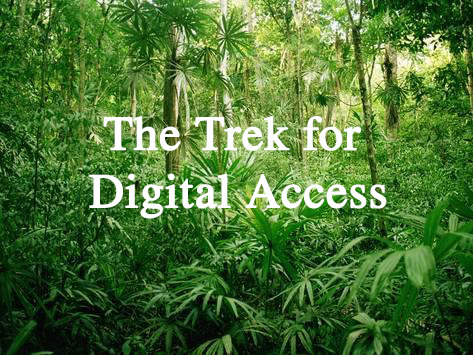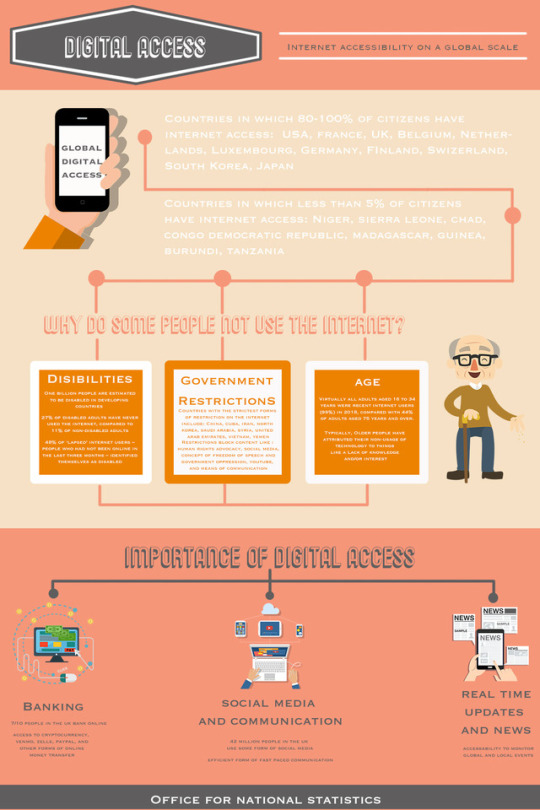Text
Rights and Responsibilities in the Context of Digital Citizenship
“We must address, individually and collectively, moral and ethical issues raised by cutting-edge research in artificial intelligence and biotechnology,” says Klaus Schwab, a renowned German engineer and economist that founded the World Economic Forum (The Future of Growth, para 7). With the recent advancements of technology, robotics, social media and communications, and artificial intelligence as a whole, there is no doubt that the responsibilities paired with these developments have grown concurrently. Moreover, the ethical implications of said progress raise new questions regarding the role in which technology plays in our lives. The rights and responsibilities associated with the increased involvement of day to day digital usage is one that is as multifaceted and pressing as any other hard-pressing issue in the 21st-century.
In regards to how technology can be utilised and applied appropriately, it is also vital that users are made aware of the implications associated with the downside of digital usage. Today, there are a plethora of platforms in which those with digital access can communicate over technology, with Whatsapp, Wechat, and Facebook Messenger being main outlets; however, those who engage in such digital communication must be held to a particular set of rights and responsibilities. Unfortunately, this has not been the case in India over the past year. As reported by the New York Times (2018), the rapid spread of rumours--over the messaging app owned by Facebook called “Whatsapp”--regarding the false kidnapping of schoolchildren in remote Indian villages, being dubbed the “child lifters,” has wreaked havoc across the country (Goel). On multiple occasions, outsiders approaching towns were mistaken for these “child lifters,” and, hence, were beaten, tortured, and ultimately, left for dead; thus, leading to an intense period of skepticism, anarchy, propaganda, and murder. The root of it all? Fake news and the spread of false information over social media platforms. With the increased accessibility to information, regardless of its factuality, individuals must hold their sources to a far higher standard than before.
With the brutal murders occurring in India, spurred on by false information spread on “Whatsapp,” questions have arisen regarding the vetting of news sources and the ways in which users are held accountable for their participation in the spreading of fake news. Is it their fault, though? Or the fault of the platform, like Google or Facebook, in which the fake news is spread? Ultimately, social media sites and digital platforms are only able to combat falsified information to a certain extent; thus, anything beyond their capabilities is up to the user's discretion. In a world where 35% of American receive their daily news from social media platforms, according to a 2017 study conducted by the Pew Research Center, this is a weighty responsibility. At the core of morality and the ethical aspects of technological usage in regards to the spread of (mis)information, lies the disingenuity and sanctity of the press--something that's validity is decided upon by the collective understanding of the people (Mitchell).
Continuing onwards with the moral and ethical issues coupled with the rights and responsibilities associated with the development of technology, it is crucial to address the increased detachment of human involvement in the realm of digital affairs; moreover, in synthesis, the improved capabilities of artificial intelligence itself. The English Oxford Living Dictionary defines artificial intelligence as “...the theory and development of computer systems able to perform tasks normally requiring human intelligence, such as visual perception, speech recognition, decision-making, and translation between languages.” With recent developments in AI and its increasing involvement in facets ranging from day to day life to intensive military operations, it is of utmost importance that humans manage these systems effectively; however, now more than ever, it seems that human interference with artificial intelligence is taking a back seat approach. While this may seem convenient, abandoning oversight is gross neglect of responsibility that may have dire consequences.
The rights and responsibilities regarding the oversight of artificial intelligence is a realm that is mostly unexplored, but, vitally important. Recently, Amnesty International, along with Access Now, and several other international organisations, partnered to develop the Toronto Declaration with the intention of establishing a set of human rights in the regards to machine learning systems. In regards to the control over artificial intelligence and other technologies of the like, the declaration contends that:
The right to an effective remedy and that those responsible for abuses are held to account. The Declaration calls on governments to ensure standards of due process for the use of machine learning is in the public sector, act cautiously on the use of machine learning system in the justice system, outline clear lines of accountability for the development and implementation of ML applications, and clarify which bodies or individuals are legally responsible for decisions made through the use of such systems.
With the introduction of a declaration of human rights, tech companies are then, in turn, bound to their responsibilities and held accountable for the subsequent actions of machine learning systems. Therefore, the direct involvement in ensuring artificial intelligence systems are only benefiting society, rather than hindering it, is a crucial aspect of the technology itself (New human rights principles on artificial intelligence, para 11).
Moreover, it is vital that as artificial intelligence develops, the relationship between technology and humanity is one of balanced growth and direct involvement. As things such as self-driving cars and drone warfare grow towards normality, it is of utmost importance that humans maintain authority. With what comes incredible innovation and the development of technology that conjures up science-fictionesque dreams comes even greater personal responsibility; hence, maintaining the “man in the loop” relationship between artificial intelligence and human interference. For example, the majority of weapons that utilise artificial intelligence are directly controlled by humans; however, there is still an aspect of removed involvement. Perhaps one of the most important factors of humanity is the ability to feel empathy. Sir Roger Carr, chairman of weapons manufacturer BAE Systems, urges for an umbilical cord of sorts to connect man and machine, as the “responsibility for the actions of the machine and compliance with the laws of war should be assigned to the human not the machine,” as machines are “devoid of responsibility” (Welsh, para 5). Artificial intelligence is one of the most exciting technological endeavours that humans have embarked on in recent history, though, perhaps, it is also the one that could lead to our demise if not correctly handled.
As Schwab stated, the establishment of answers to the moral and ethical questions centred around technology--moreover, the rights and responsibilities to then uphold those answers--is of paramount importance. With the development of digital systems, humankind must address their responsibilities of maintaining truth, empathy, and ultimately, self-control, when handling the machines that grow alongside us.
References
Artificial intelligence | Definition of artificial intelligence in English by Oxford Dictionaries. (n.d.). Retrieved from https://en.oxforddictionaries.com/definition/artificial_intelligence
Goel, V., Raj, S., & Ravichandran, P. (2018, July 18). How WhatsApp Leads Mobs to Murder in India. Retrieved from https://www.nytimes.com/interactive/2018/07/18/technology/whatsapp-india-killings.html
Mitchell, A. (2018, January 03). How Americans Encounter, Recall and Act Upon Digital News. Retrieved from http://www.journalism.org/2017/02/09/how-americans-encounter-recall-and-act-upon-digital-news/
New human rights principles on artificial intelligence. (n.d.). Retrieved from https://www.openglobalrights.org/new-human-rights-principles-on-artificial-intelligence/
The Future of Growth: Technology-Driven, Human-Centred. (n.d.). Retrieved from https://www.weforum.org/de/open-forum/event_sessions/the-future-of-growth-technology-driven-human-centred
Welsh, S. (2018, September 19). We need to keep humans in the loop when robots fight wars. Retrieved from https://theconversation.com/we-need-to-keep-humans-in-the-loop-when-robots-fight-wars-53641
0 notes
Link

As a student focussing on journalism, the ways in which stories are presented and the tactics of enriching information is highly fascinating to me. I have studied academic language, casual speech, and creative writing, however, Twine introduced an interesting form of non-linear story telling that I found particularly compelling. Moreover, it allowed for a creative aspect of discussing ARCHCELLS and incorporating basic coding. I am by no means a tech wiz, or even a minimally proficient coder, though my abilities to interact with digital systems has certainly been increased sufficiently.
Setting out to make my Twine story, I knew I wanted to pitch a nonlinear story, incorporating the elements of digital citizenship, that was interesting and unique. I went about this by playing on the plane-wrecked-on-an-island trope, a classic adventure themed story familiar to users. From there, I introduced the mission of the game: reach the top of the mountain to obtain cell phone service to be able to call for help--thus incorporating digital access. Furthermore, there are an upwards of 20 different endings as a result of a combination differing of decisions; hence, the game varies each time it is played. I found the incorporation of variables to be the most difficult, however, I worked to include them and advance my adequacy in the program. Twine was my first experience with coding, and while it certainly provided its fair share of difficulties I had a good time constructing it. Personally, I feel as if this module has increased my understanding of not only the elements of digital citizenship itself, but also the system in which it interacts with; thus, preparing me for the field in which I intend to be employed in.
images from kissing.com
0 notes
Photo

Prior to taking this module, I had very minimal experience with photoshop. The brief bit that I did know though, was in regards to editing pictures--not constructing or drawing an infographic. Because of this, I grappled with my abilities to produce a successful product; however, this assignment has enriched my photoshop knowledge and skills tenfold. Personally, I feel as if I was able to design, assemble, and create an infographic that clearly exemplifies digital access.
In regards to the actual development and construction of my infographic, I went through multiple stages prior to arriving at its completion. For instance, as for selecting my topic, I had been interested in the age gap between internet users and the diminishing qualities of accessibility based off of age, as discussed in a previous seminar. I took this interest and incorporated it into my infographic; hence, expanding this focus and it with the importance of digital accessibility. From there, I wanted to develop a product that was easy to read and engaging to the eye. I did this by creating a linear infographic that starts off with broad topics and gradually focusses. This is illustrated by the introduction of digital access on a national level at first. My infographic clearly states the countries that have high levels of technological access for its population as compared to countries with little to no internet access. From there, it transitions to why some people with internet access do not use it; for instance, tying this back to disabilities, government restrictions, and age. To highlight the importance of not only expanding the internet to those who have none at all, but also to making it more accessible for those who do, I finished my infographic with specific examples--like online banking, social media and communication, and real-time updates and news--of the ways in which digital access is important on a day to day level.
0 notes